10 Things You Didn’t Know About San Pellegrino
/ 0 Comments / Food Trends /
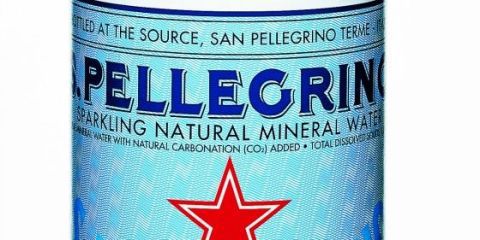
The Water Has Come from the Same Natural Spring for 600 Years.
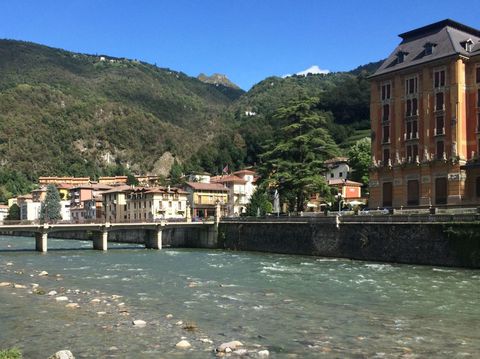
While it’s not known who discovered the natural springs, we do know that it was discovered as early as the 12th century. The water flows from natural springs within the Italian Alps (originating in the Dolomites) near Bergamo (Lombardy).
The company is serious about protecting its precious source. A team of in-house and trained geologists and hydrogeologists to monitor and maintain the health of the springs and quality of the water. In fact, only authorized people are granted access to the springs. By the time the water gets to its bottle, it’s been naturally filtered for 30 years by the rocks of the Italian Alps, giving the water its distinctive taste.
The Town Was Once the Playground of the Rich
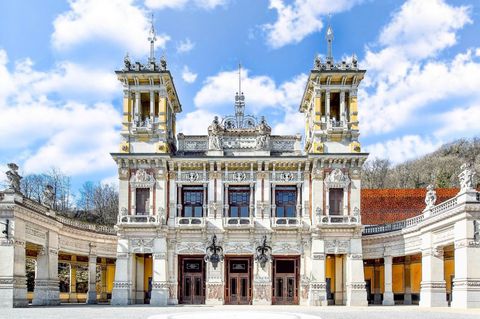
The town of San Pellegrino Terme has had a reputation for its mineral water since the time of Leonardo DaVinci, who actually visited the town to map the water. The Palazzo family built the first spa to take advantage of the source, and the town immediately began gaining fame as a vacation spot. The fancy folks of Europe flocked to the town to take the water and mingle with the aristocracy. To entertain the bourgeoisie of Europe, the town built the beautiful Belle Epoque-style Casino and Grand Hotel, where guests could gamble, mingle and relax between spa sessions.
There Are At Least 10 Minerals Found Naturally in the Water
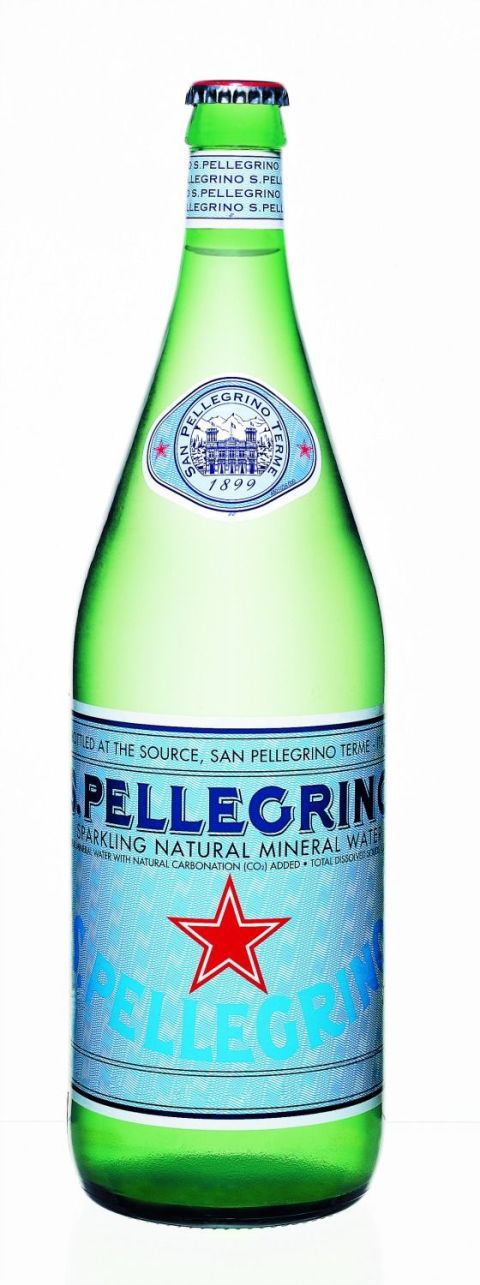
Calcium, chloride, fluorine, lithium, magnesium, nitrogen, potassium, silicon, sodium and strontium are just a few of the most prevalent minerals found in S.Pellegrino water. The minerals are the result of the water’s 30-year journey around the rocks inside the Alps. The water is so mineral heavy, that if you drank it in its purest version the aftertaste would be a bit milky, but with the addition of the CO2, that milkiness disappears completely and you’re left with a crisp finish.
The Bubbles Were Added for a Very Specific Reason
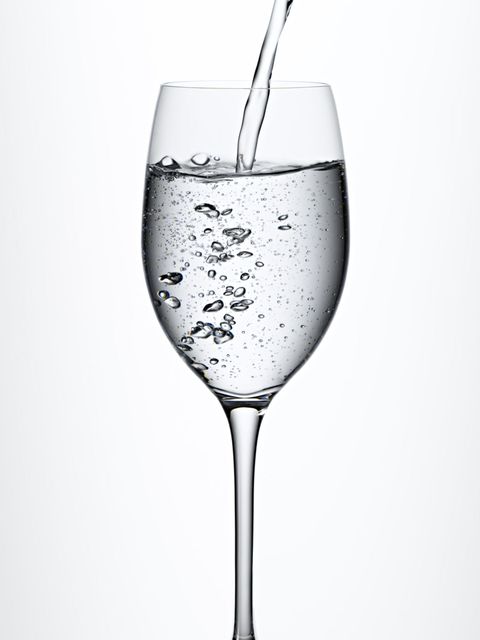
Originally S.Pellegrino water was bottled without carbonation, but once the company started to ship the water, they added natural carbonation to preserve the minerals. Customers preferred the taste of the water with the carbonation so much, the company stopped selling the non-carbonated version.
You’ll also notice that the bubbles in S.Pellegrino water are a lot lighter and smaller than some other sparkling waters. That’s because the brand only adds the exact right amount of C02 (no more, no less) that’s required to keep the minerals in tact. So it contains less CO2 than most other brands.
All of the Water is Built in Same Plant in Italy
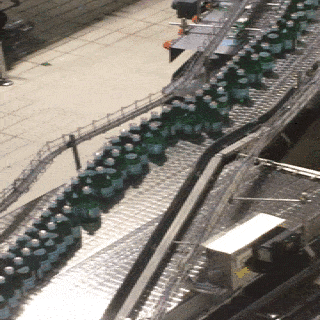
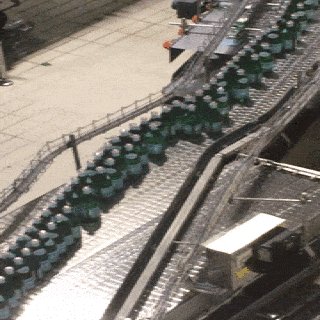
More than 30,000 bottles of S.Pellegrino water are created per hour at the San Pellegrino Terme plant. The law states that every bottle of water must be bottled directly at the source—in order for natural mineral water to be sold must be bottled at the source and not undergo any treatment, except for the carbonation, which is added from a natural mine.
The water is sourced at the spring site, captured and transported directly to the bottling plant via stainless steel, food-grade pipelines. The water is temporarily held in food-grade storage stainless steel tanks upon initial receipt at the plant and tested for conformance quality and health standards. The water is then bottled (and carbonation is added to the water in the filling phase) and packaged – passing several stages of quality control – then shipped all over the world.
Early S.Pellegrino Ads Touted Health Benefits
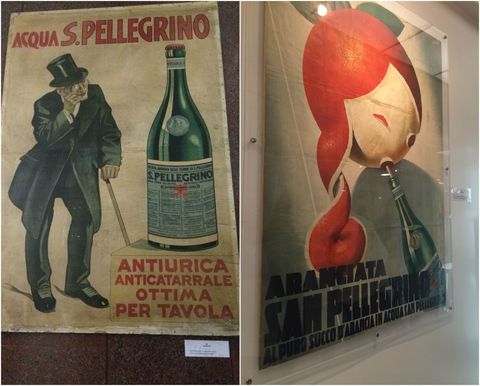
S.Pellegrino’s original ads focused on the water’s health benefits and how the water could bring those benefits far from the source of the water. The ads touted the water’s ability to prevent some diseases, especially stomach-related ones. By the 1930s the ads moved away from selling the water’s health benefits to promoting the drink as the best choice of water for fine dining. Today, the water is considered a prerequisite of fine dining restaurants all over the world.
The Bottle’s Design Is Full of Secrets
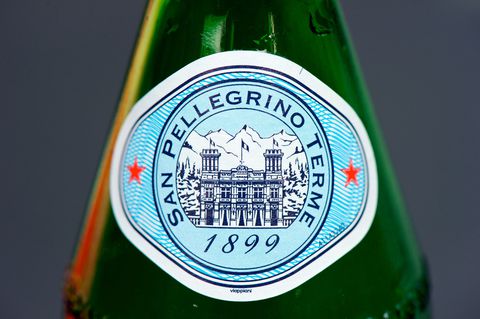
The iconic green bottle was designed in 1899, and was originally used to bottle wine. The red star was considered a symbol of export products of particular excellence and quality. The bottle’s label features the Art Nouveau casino building of San Pellegrino Terme against the Alps skyline. The label also changes occasionally to highlight the brand’s latest efforts—be it a special logo for the Milan Expo or partnerships with brands like Vogue and Bulgari.
The Company’s Fruit Beverages Are Also Bottled at the Source
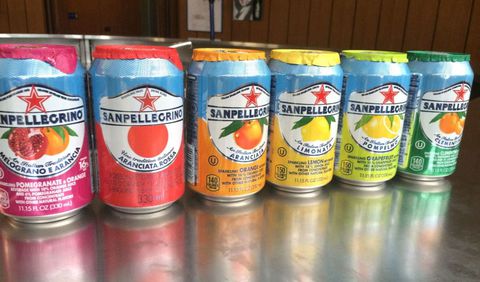
In 1932, S.Pellegrino introduced its first sparkling fruit beverage Aranciata. Legend has it that the president of the company was entertaining guests when it was pretty hot outside, and he wanted to create a special drink that was extra refreshing. He had the idea to squeeze oranges and add sugar to the sparkling water. Thus, Aranciata was born.
The fruit is harvested in Sicily, frozen and sent to San Pellegrino Terme to be added to the beverages. The current roaster of flavors includes Aranciata (orange), Limonata (lemon), Pompelmo (grapefruit), Aranciata Rossa (blood orange), Melograno & Arancia (pomegranate and orange), Clementina (clementine) and Ficodindia & Arancia (prickly pear and orange), which will most likely be introduced globally in 2016.
The Town Is One of Italy’s Best-Kept Secrets
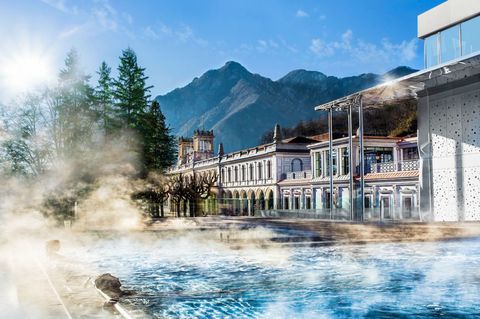
Though the Grand Hotel sits abandoned (there’s rumors it may reopen), the modern-day San Pellegrino Terme is a real delight to visit. Nestled at the foot of the Alps, the town is basically the Italian version of the fictional Republic of Zubrowka in The Grand Budapest Hotel. The real gem of the area is the recently renovated QC Terme San Pellegrino spa. Full of thermal pools, tonic waterfalls, saunas, steam baths and salt and relaxation rooms, the spa takes advantage of the town’s mineral water against a backdrop of the still-in-use (for private events) San Pellegrino Casino.
Pairing the Water with Wine is a Real (Awesome) Thing
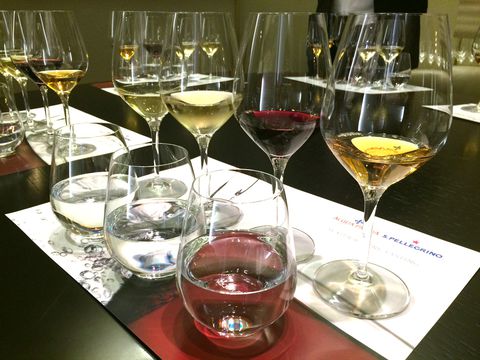
As part of its reputation as a fine dining water, S.Pellegrino (and its still counterpart, Acqua Panna), gained a following in the win pairing scene. Sommelier Massimo Raugi actually presents classes about what type of water to pair with certain wines that showcase how big a difference the type of water you drink can affect your glass of wine’s taste.
“We can learn how to harmonize water and wine to reach the perfect combination [that] brings out the quality of both. Sipped alternately, wine and water should induce a sequence of sensations that follow and overlap each other, without either one overpowering or annulling the other. In order to ensure a perfect match, the water must be either equal, or slightly above or below in intensity (and quantity) of taste with respect to the wine.”
Raugi gave us some guidelines to keep in mind:
Drink San Pellegrino with: White wines served for aperitif, young red wines with pointed acidity and tannins, persistent; slightly-bodied red wines with secondary aromas, hinting a mature fruit and spices; and full-bodied mature red wines with complex bouquet, round and smooth on the tongue
Drink Acqua Panna with: Fresh and fruity white wines; white wines aged in barrels: still water owing to its light and smooth tone; great red wines; and classic sparkling wines and vintage champagne
Drink either with: Sparkling wines and non-vintage champagne NV
